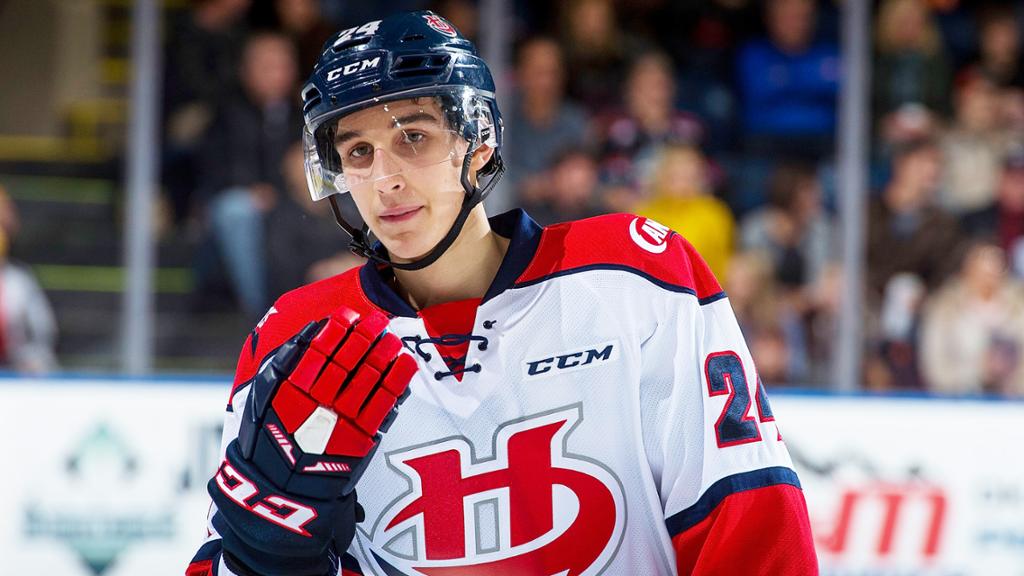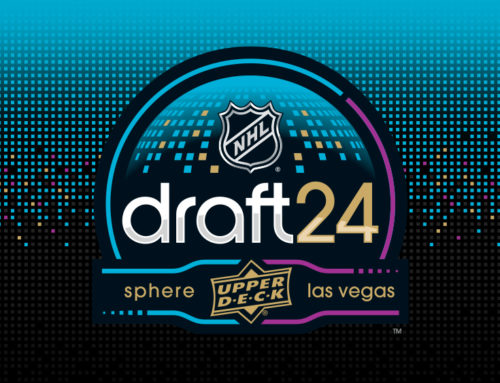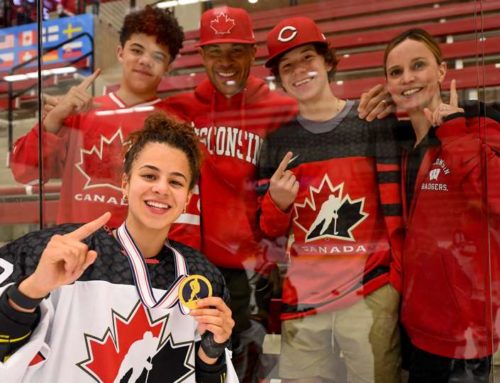Prospect Rambling: 2019 First Round Mid-Season Expectation vs Reality Grades
Brayden Olafson
2020-01-10
The 2019 NHL Entry Draft is more than 200 days old and we’re approaching the halfway point of their D+1 season. Today seems like a good day to begin looking back at how some of the players from the first round of that draft have developed and progressed. Over the next several weeks, using a format of ‘Expectations vs. Reality’ and ultimately, a final grade, I’ll be looking at each of the players drafted in the first round last June. I’ll do my best to convey a sense of where each player is today relative to what we expected from them coming out of the draft, with the grading scale matching up as follows:
A – Exceeding expectations based on the quality of competition, in both offensive and two-way aspects
B – Meeting expectations in both offensive and two-way aspects
C – Slightly missing expectations in either offensive or two-way aspects
D – Missing expectations in both offensive and two-way aspects
F – Entirely disappointing relative to expectations
To clarify, two grades of B+ does not mean that the players have had equivalent seasons, only that they’ve both performed the same relative to their respective expectations.
Atlantic Division
 Boston Bruins
Boston Bruins
John Beecher | 30th Overall
Expectations:
It almost wouldn’t have seemed appropriate for any team other than the Bruins to select John Beecher in the first round of last summer’s Entry Draft. The USNTDP product boasts a strong physical game that catches the attention of his viewers, but his offensive skills can often be overlooked. Being buried in a deeper role of the U18 development program roster made Beecher somewhat of an afterthought entering draft day, but since his selection, speculation for the 6-3 forward’s potential has been a hot topic of discussion. Entering the world of collegiate hockey, a Kieffer Bellows type of freshman-year was the minimum expectation for Beecher, while a pace comparable to Oliver Wahlstrom’s freshman campaign would be considered an A+!
Reality:
Sixteen games into his freshman slate with the Wolverines, Beecher has leveraged every bit of his skill and physicality to a 19-point regular season pace. His showing at the WJC was not quite as impressive, coming home with a goose egg through five contests. Nonetheless, Beecher’s ability to create space in the BIG10 is a great sign for the 30th-overall draft pick.
Grade: B+
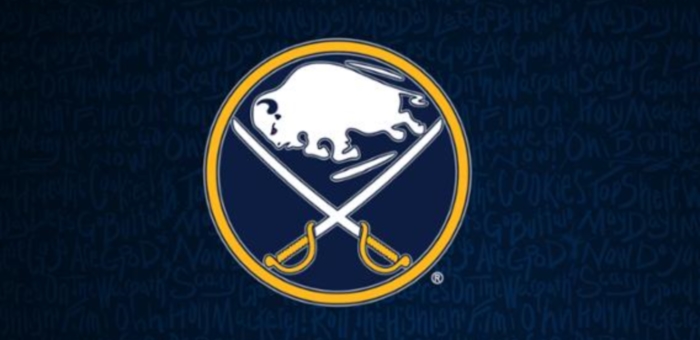 Buffalo Sabres
Buffalo Sabres
Dylan Cozens | 7th Overall
Expectations:
As a top-ten selection, it would have been difficult for Whitehorse native, Dylan Cozens to avoid the limelight in his D+1 campaign, regardless of the results. At the time of his selection, the speedy pivot had come off a year where he was a leader on both Canada’s National U18 squad, as well as his club team in Lethbridge. His scouting report also boasted of a unique ability to finish plays by single-handedly beating defenders and putting the puck in the back of the net with an uncanny confidence. Considering that Cozens’ had been mock drafted as high as third overall in many pieces leading right up to the draft, one could almost say that expectations for an explosive D+1 slate dropped on draft day. A major role on Team Canada at the WJC, in addition to leading his club team to a strong finish in the WHL would earn him full marks, but anything less would only be worth partial marks.
Reality:
Cozens hit the mark at the WJC earlier this month, representing Canada strongly on the international stage in a primary role. His 104 point pace with Lethbridge is outstanding, especially considering how well rounded his play has been on an individual scale. While Lethbridge has yet to emerge as a WHL leader, Cozens is certainly doing everything in his power to keep them in contention and poised for a strong finish.
Grade: A-
Ryan Johnson | 31st Overall
Expectations:
The Sabre’s second selection of the first round came with the final pick on day one. Ryan Johnson was the first player selected from a USHL club team and one that many teams were probably hoping to see available on day-two. Johnson had been praised for his mobility and edgework but critiqued for his frequent gambles from the back end. Cracking Team USA’s roster for the U20 WJC in the Czech Republic was always going to be an uphill climb for the 31st overall draft pick, but doing so would’ve solidified an A+ grade. Committed to the University of Minnesota, Johnson was poised to fill in the void left by Gopher alumni, Ryan Lindgren – doing so would mean stepping into a reliable top-four role and a home run grade.
Reality:
As expected, Johnson ultimately missed the final cut for the American’s World Junior squad, but getting his foot in the door on the preliminary roster was no small feat either. For a player who had been valued in the same tier of players as others who were drafted through the second round, Johnson has done well to justify his actual draft slot.
Grade: B
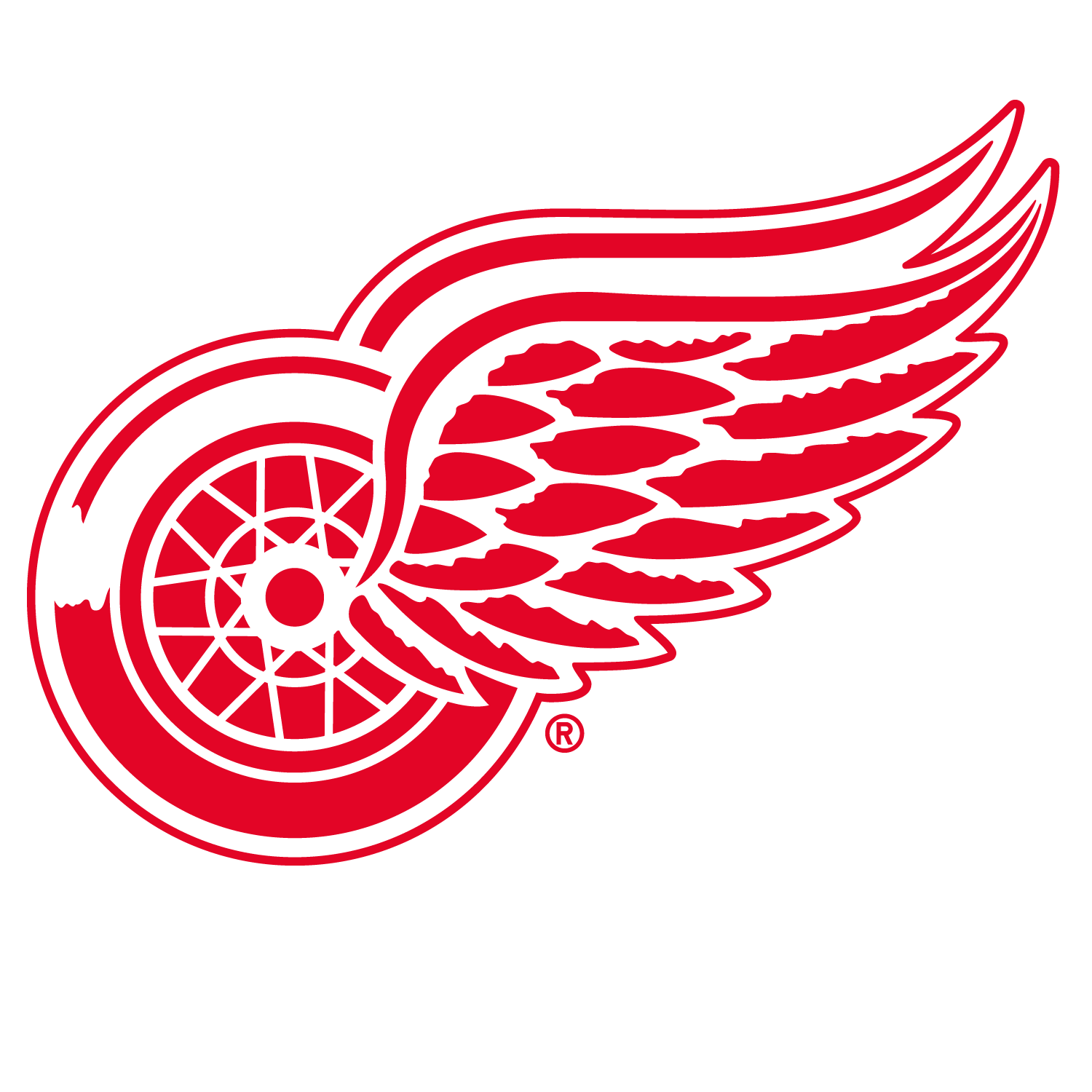 Detroit Red Wings
Detroit Red Wings
Moritz Seider | 6th Overall
Expectations:
The Red Wings, and especially Steve Yzerman shocked most of the hockey world by selecting the German defenseman as high as they did last June. Seider’s draft stock had quickly risen over the final few weeks before the draft, but sixth overall was even higher than most expected him to be selected. Along with the prestige of a top selection, however, comes extremely high expectations. Making his way into a more renowned league than the DEL was going to be a necessary step in Seiders’ development, as well as making an impact on the international stage.
Reality:
Seider is part of the small and relatively unique group of D+1 players who were eligible to and ultimately elected to begin their career as an affiliated NHL affiliated prospect, in the AHL. Playing in North America has given him prime exposure to a new pool of evaluators and the verdict has come back quite strong. The defensive aspects of his game have exceeded expectations with the Grand Rapids Griffins, while his production has certainly met expectations. He has yet to get an opportunity with the Red Wings, but there are still a few months left to make that happen.
Grade: B+
 Florida Panthers
Florida Panthers
Spencer Knight | 13th overall
Expectations:
The last time that a goaltender had been selected this high in an NHL Entry Draft was way back in 2010 when Dallas selected Jack Campbell at 11th. The way that Campbell’s career has developed makes it difficult to make him an appropriate comparable, especially when setting expectations for the Panthers young goaltender. Rather, a more recently drafted Dallas Stars goaltender probably provides the most up-to-date and accurate baseline for a goalie, and that’s Jake Oettinger. The most significant difference between Oettinger and Knight is that the latter was drafted from the USNTDP, while the former had already begun his collegiate career by the time he was drafted.
Reality:
Regardless of who set the baseline for Spencer Knight, the 18-year-old goaltender has hit the mark on all expectations, with the exception of one. While it would’ve been the cherry on top of the seasons’ first half, to see Knight be named goaltender of the tournament at the U20’s, the American’s were bounced in the quarter-final. Knight played exceptionally well in a 1-0 defeat, and throughout the tournament. His club play with the BC Eagles has been excellent, with the freshman providing affirmation for structure and other traits that landed him in the first round.
Grade: A
 Montreal Canadiens
Montreal Canadiens
Cole Caufield | 15th overall
Expectations:
Entering the draft with the shadow of being one of the most prolific goal-scorers in USNTDP history, Cole Caufield was critiqued, like so many before him, in the department of size and physicality. Knowing that his ability to find open ice and clean lanes at the next level would inevitably present a challenge to the (generously listed) 5-7 forward. While it’s accepted that Caufield was never really thought of like a boom/bust type of prospect, success in his D+1 slate was always going to be analyzed on a pretty black and white scale. Goals=success.
Reality:
To the chagrin of his doubters, Caulfield has been impressive at the collegiate level. His 12 goals with Wisconsin are more than double the next U20 player. More than just continuing to find soft ice, Caufield has shown an improvement in his shot and his staking over the past few months. His WJC showing wasn’t as impressive, but that doesn’t entirely take away from his other successes.
Grade: B+
 Ottawa Senators
Ottawa Senators
Lassi Thompson | 19th overall
Expectations:
After a year in which the Finnish defenseman successfully introduced himself to hockey in North America with the Kelowna Rockets, the Ottawa Senators nabbed Thomson in the 19th slot of the 2019 Entry Draft. Roughly pegged as a modern and offensively able defensive-defenseman, Thomson’s path for the 2019-20 season remained in flux at the time of the draft. Ultimately, his D+1 success would be judged upon his ability to elevate his game, regardless of where it is done.
Reality:
Ultimately, despite Kelowna having a guaranteed spot at the 2020 Memorial Cup Tournament, Thomson opted to challenge himself by joining the senior Liiga club who owned his rights, Tampereen Ilves. His production has been solid, considering the strength of his competition and his injury hiccups. He was challenged defensively on an international stage at the WJC, which limited what we might have expected in terms of offense. Ultimately he has done nothing to think that he cannot fulfill the role that will be expected of him as an NHL player one day.
Grade: B+
 Toronto Maple Leafs
Toronto Maple Leafs
None
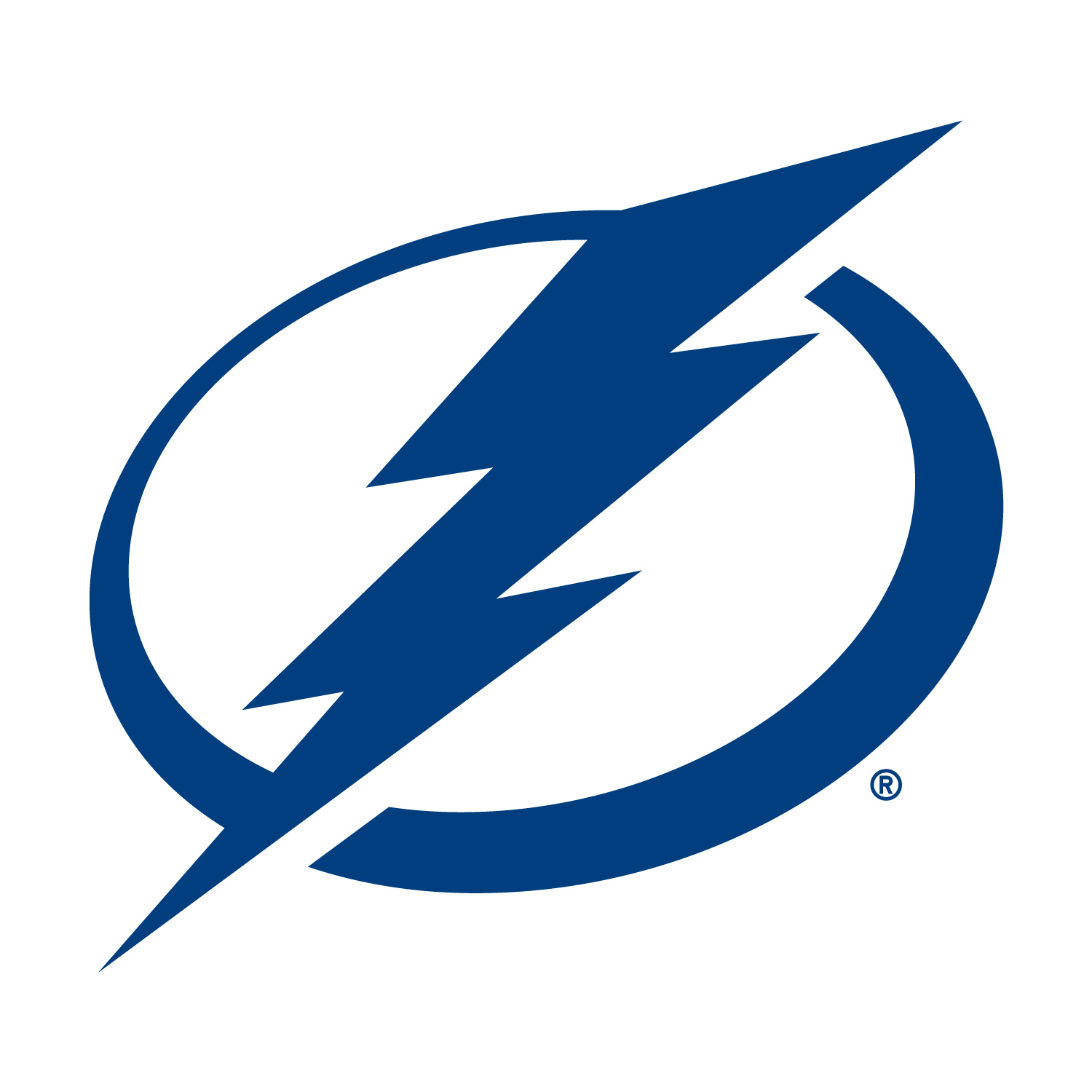 Tampa Bay Lightning
Tampa Bay Lightning
Nolan Foote | 27th overall
Expectations:
The younger brother of prior Tampa Bay prospect Cal Foote was perhaps one of the biggest surprise picks of the first round in 2019, despite being so late in the day. Although he was praised for his strong shot and heavy play while playing with a minor wrist injury, questions surrounding his skating technique are what made the pick a little surprising. Making Team Canada would be considered a pro for the 18-year-old, and ultimately being a leader for the Memorial Cup host, Kelowna Rockets would indicate that Foote’s development is on track in the WHL.
Reality:
Being named the Rockets captain to open the WHL season was a great way to start the year. Following that up with consistent production and a major role at the U20’s for Canada has Foote looking like he never should have been doubted as a first-round draft pick.
Grade: A
Looking back at the Atlantic Division, most of the players drafted in the first round have either met or exceeded expectations. As an early analysis, the players who were drafted in the latter quarter of the first round seem to be exceeding expectations, while those drafted in the third quarter of the round are only meeting them. Ultimately this is evidence to the concept that there was a broad tier of players available in the draft that stretched from the mid-first round all the way into the late-second round.
Check back in a couple of weeks for similar analysis on the players drafted by Metropolitan Division teams. In the meantime, find me on Twitter @olaf1393.


